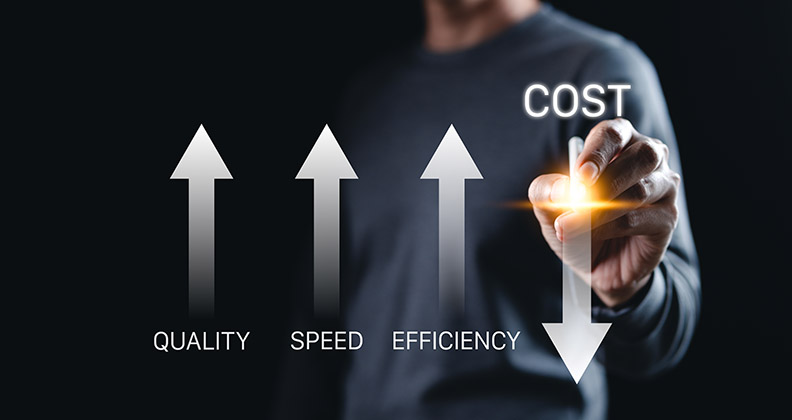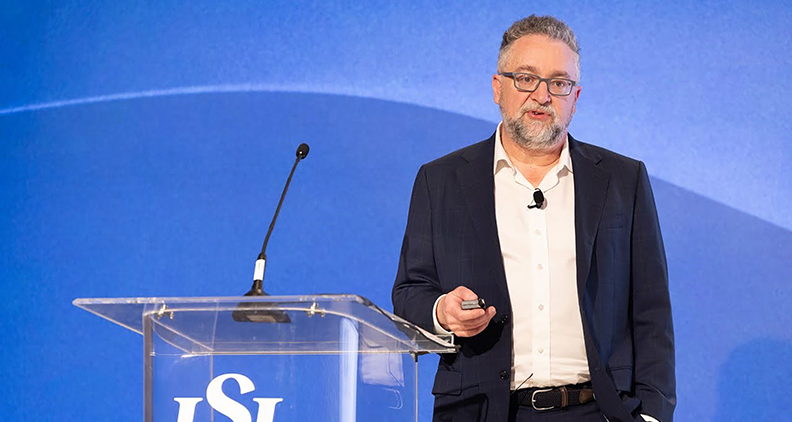
Howard Levy knew little about the supply chain profession when he began talking to a Ford Motor Company recruiter in the late 1980s. He was finishing his MBA at the University of Illinois and considering his first big career move.
“Working with suppliers and engaging with them on new product programs sounded much more exciting than becoming a banker,” Levy said.
His early education on the topic consisted of an independent study course on purchasing from a marketing professor at the university, and then Ford’s Supply Chain Graduate Program. What followed was a celebrated career that spanned the automotive and medical device industries. In March, Levy left his position as Vice President of Global Sourcing at Zimmer Biomet after 17 years with the company.
“While I enjoyed buying bumpers for F-Series trucks, Zimmer Biomet has a higher-level mission to alleviate pain and improve the quality of life for people around the world,” Levy said. “I am immensely thankful to the sourcing team and our suppliers for their passion and extraordinary commitment to delivering on our mission.”
Levy was also a long-time member of the BONEZONE and OMTEC Advisory Board. We asked him how the sourcing profession has evolved and what it takes to be successful today.
How has the sourcing profession changed since you started your career?
Levy: I was very fortunate to be part of the Ford quality revolution, where purchasing moved from ‘three quotes and a cloud of dust’ to Ford leading the U.S. automotive industry in quality, supplier relationships and total cost. At that time, most companies’ purchasing functions were focused on tactical activities like PO creation, chasing parts and supplier payments.
The biggest change since the start of my career has been the evolution to strategic sourcing across all industries. There’s now recognition that supply chains can determine whether you succeed or fail. This realization is a significant reason why many universities offer supply chain programs, and there’s an enhanced respect for sourcing professionals.
What habits or practices helped you succeed in your sourcing career?
Levy: First, a hunger to learn and a spirit of curiosity. I had eight different positions in my ten-and-a-half years with Ford. So, it was critical to get up to speed quickly on new commodities and suppliers. Visiting suppliers and getting to know them was very important, as each role was like drinking from a fire hose.
Second, always having respect for key cross-functional team members and proactively engaging and leveraging their expertise to make the right sourcing decisions. Nothing is more powerful than development engineering, supplier quality and manufacturing operations working together with sourcing.
Plus, the early engagement of suppliers in the new product introduction process to ensure you optimize design for manufacturing and assembly can be the critical factor in launching a cost-competitive product on time.
And last, a willingness to roll up the sleeves and work with suppliers to figure out solutions to daunting problems. At Ford, I visited suppliers to lead teams through fixing our most challenging issues.
Those experiences and the added perspective they provided came in handy with the unprecedented supply chain challenges we have faced in the medical device industry over the past few years.
What skills do you think are most valuable for sourcing professionals today?
Levy: The sourcing team must include proactive and respected influencers to create better strategic solutions that provide a competitive advantage for the business. Whether tapping into supplier innovation or launching new critical products quicker, sourcing professionals need to have the right technical and subject matter expertise. The “secret sauce” to a successful sourcing organization is a mixture of backgrounds.
What have you learned about supplier relationships?
Levy: While there will inevitably be difficult discussions with suppliers, it’s important to treat them with respect and professionalism. Make visiting your suppliers a high priority. Given their extensive knowledge of their parts and our industry, on-site supplier visits can be game-changing. Remember to thank the suppliers who go the extra mile and celebrate success together.
What trends do you think will shape the future of sourcing in orthopedics?
Levy: The suppliers that win will be those that closely partner with the OEMs on cost, technical support, program execution and responsiveness. It won’t necessarily be the biggest suppliers.
Regional and dual sourcing will become more common given global supply chain challenges and increased geopolitical risks. In addition, ensuring multiple approved suppliers on raw material specifications will become a higher priority.
I expect OEMs and suppliers to continue engaging in merger and acquisition activities. Suppliers should continue to diversify customers and industries to reduce disproportionate risk. At the same time, OEMs will need to further evaluate decisions to introduce new suppliers from other industries to offset the cost risk from supplier consolidation.
You’ve led a lot of people throughout your career. What advice would you offer to others in our industry who seek professional development?
Levy: Have an annual goal of self improvement from formal courses, such as master’s degrees or presentation skills, to on-the-job learning, like in-person supplier visits.
Be creative and take advantage of your company’s courses, LinkedIn learning, podcasts and other resources to stay up to speed on the latest trends and bolster interpersonal skills. Generative AI, project management and language come to mind. Plus, consider seeking out a mentor.
While everyone gets very busy with daily issues, it is critical to prioritize attendance at selective industry conferences that cover best practices, advancing technologies and educational sessions. OMTEC does a great job each year of bringing together suppliers and OEMs to learn about emerging technologies that are applicable across a broad spectrum of functions and experience levels in the orthopedics industry.
CL
Carolyn LaWell is ORTHOWORLD's Chief Content Officer. She joined ORTHOWORLD in 2012 to oversee its editorial and industry education. She previously served in editor roles at B2B magazines and newspapers.




